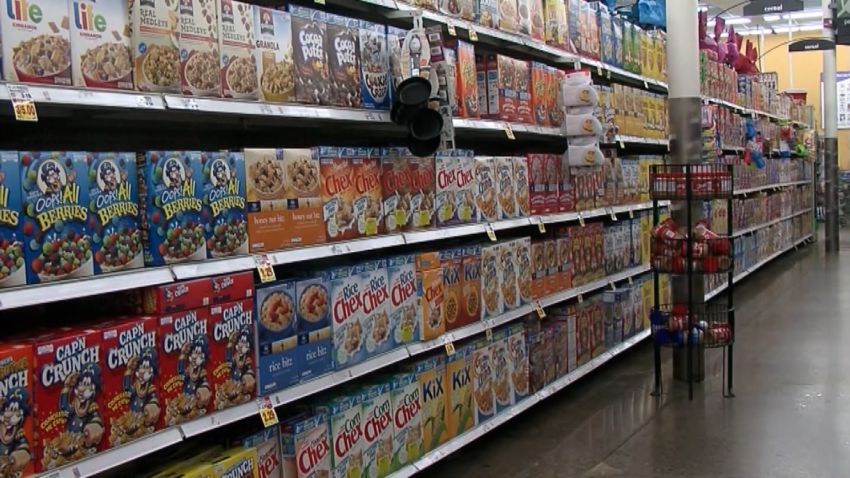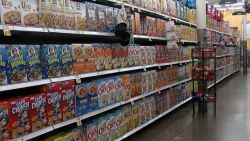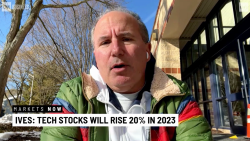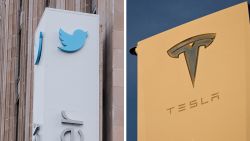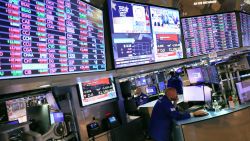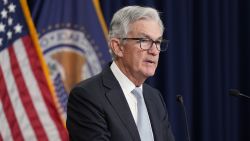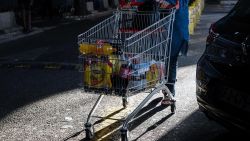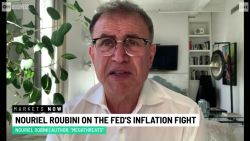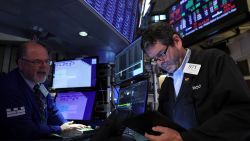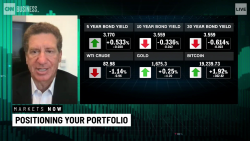A version of this story first appeared in CNN Business’ Before the Bell newsletter. Not a subscriber? You can sign up right here. You can listen to an audio version of the newsletter by clicking the same link.
Buying a burrito bowl or a burger will hit your wallet a lot harder these days.
What’s happening: An order at Chipotle (CMG) costs about 10% more than it did one year ago, the restaurant chain said when reporting earnings on Tuesday. That means that if a steak burrito cost $8 this time in 2021, it’s now $8.80.
It’s not the only fast food option to get more expensive. McDonald’s (MCD) increased its menu prices by about 6% last year, while Starbucks (SBUX) hiked prices in October and again in January.
So far, that hasn’t hit sales. Chipotle reported revenue of $2 billion for the final three months of 2021, beating expectations. Comparable restaurant sales climbed more than 15%. Shares of the company are up 6.5% in premarket trading.
“We’re pretty fortunate with the pricing power that we have,” CEO Brian Niccol said in an interview with CNBC. “Our brand is really strong.” He noted a chicken burrito is still less than $8 in most US markets.
Eating out has been a significant component of surging inflation. Food away from home got about 6% more expensive last year, according to the US Bureau of Labor Statistics.
Driving the increase: Companies like Chipotle have had to pay workers a lot more to combat staff shortages. In May, the company increased the pay of its restaurant workers to an average of $15 per hour. Ingredients and transporting goods have also become more expensive.
These factors aren’t expected to dissipate any time soon. Food commodity prices have jumped 6% so far this year, according to Goldman Sachs. And workers continue to be in the driver’s seat as demand for labor stays high.
“We continue to see pressure on wages,” Niccol said on a call with analysts. “We want to make sure that we continue to be competitive on that front.”
With this in mind, restaurant executives are telling Wall Street they expect price hikes to continue.
Starbucks (SBUX) CEO Kevin Johnson told analysts last week that the company has “additional pricing actions planned through the balance of this year” in order to “mitigate cost pressures.”
Niccol also indicated additional price rises are on the table at Chipotle.
“Beef and freight and some of these other things that continue to stay elevated, if we don’t see it abate, we’ll have to take some additional pricing there,” he said.
Chipotle’s chief financial officer said they “keep thinking that beef is going to level off and then go down,” but “it just hasn’t happened yet.”
On the radar: The latest data on US consumer inflation arrives tomorrow. Climbing food prices — both inside and out of the home — are likely to be a big part of the story.
And while economists expect inflation to decline in the second half of the year, as central banks pull back support for the economy, executives in the restaurant industry don’t sound like they’re expecting much to change, at least for the time being.
Omicron is hurting demand for Lyft rides
After years of burning cash, Lyft (LYFT) is trimming its losses. The ride-sharing company lost $1 billion last year, compared to $1.8 billion in 2020. On an adjusted basis, Lyft (LYFT) posted its first-ever full-year profit, a key milestone for investors.
So why is Lyft’s stock down 4% in premarket trading?
When reporting its latest earnings after markets closed on Tuesday, the company warned that its current quarter will be affected by the Omicron variant.
Previously, it had expected a “strong” increase in ridership during the first quarter. Now it thinks rides will be “down slightly,” hurting revenue.
“Ultimately, given the expected impact of Omicron on [the first quarter] and the unknown shape of the recovery, which could carry into [the second quarter], our near-term revenue growth acceleration will likely be affected,” CEO Logan Green told analysts.
Green said he expects demand to recover now that the wave of Omicron infections in the United States appears to have peaked, however.
“In the last week of January, we saw a pickup in rideshare rides that we see as a positive signal,” he said.
Investor insight: Even though Lyft’s finances are improving, Wall Street has remained skeptical. Shares fell 13% last year, compared to a 27% rise in the S&P 500. They’re down almost 4% year-to-date.
Bitcoin is four times more volatile than gold
Bitcoin has gained 15% so far this month after a dismal December and January. But based on its ongoing swings, mainstream investors are unlikely to get too excited.
“The biggest challenge for bitcoin going forward is its volatility and the boom and bust cycles that hinder further institutional adoption,” JPMorgan analyst Nikolaos Panigirtzoglou said in a note to clients published this week.
There’s been lots of chatter in investment circles about bitcoin becoming a form of “digital gold,” since it’s an asset that theoretically could retain its value even if stocks and bonds drop and can therefore help diversify portfolios.
But bitcoin is currently about four times as volatile as the yellow metal. Based on this calculation, Panigirtzoglou puts bitcoin’s “fair value” — the best estimate of its price based on market conditions — at $38,000, below its current price near $44,000.
In the longer term, if investors do start to treat bitcoin like gold, JPMorgan thinks its value could rise to $150,000.
But that’s a while away. For the time being, bitcoin’s ebbs and flows remain closely correlated with the stock market, Panigirtzoglou notes. And its rockiness compared to other assets is likely to keep some would-be buyers away.
Up next
CVS (CVS), Fox Corporation (FOXA), MSG Entertainment (MSG) and Canopy Growth (CGC) report results before US markets open. Mattel (MAT), MGM Resorts (MGM), PepsiCo (PEP), Disney (DIS) and Uber (UBER) follow after the close.
Coming tomorrow: How much did US consumer prices rise in January? Economists polled by Refinitiv are forecasting 7.3% gains compared to the previous year.


